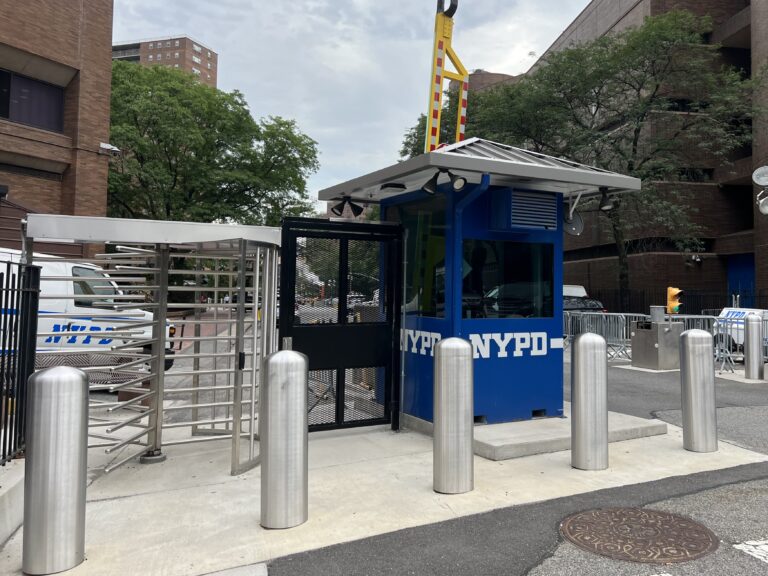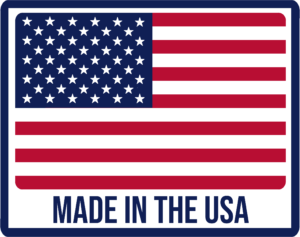
When it comes to ensuring the safety and security of public spaces, selecting the right type of bollard is crucial. Bollards are versatile security solutions used to control traffic flow, protect pedestrians, and safeguard buildings and infrastructure. At Barrier1 Systems, we offer a wide range of bollards designed to meet various needs and applications. In this guide, we’ll explore the different types of bollards and how to choose the right one for your project.
Types of Bollards
Shallow Mount Bollards
- Description: Shallow mount bollards are designed for areas where deep excavation is not possible or practical. They require minimal digging and are easy to install.
- Applications: Ideal for urban environments, historical sites, and areas with underground utilities where deep foundation work is restricted.
- Advantages: Quick installation, minimal disruption to existing surfaces, and robust security.
- Barrier1 Shallow Mount Bollards: Hornet M30 (ASTM F2656 M30-P1), Hornet M40 (ASTM F2656 M40-P1), Tomahawk M30 (ASTM F2656 M30-P1), Tomahawk M50 (ASTM F2656 M50-P1)
Super Shallow Mount Bollards
- Description: These bollards require even less excavation depth than shallow mount bollards, making them suitable for locations with the most stringent installation constraints.
- Applications: Perfect for projects where surface integrity must be maintained, such as airport runways, parking structures, and busy city streets.
- Advantages: Extremely low excavation, fast installation, and effective protection without compromising the surrounding area.
- Barrier1 Super Shallow Mount Bollards: Talon M40 (ASTM F2656 M40-P1)
Set and Pour Bollards
- Description: Set and pour bollards are installed using a traditional method that involves setting the bollard in place and pouring concrete around it to secure it.
- Applications: Commonly used in high-security areas, such as government buildings, military bases, and financial institutions.
- Advantages: High-impact resistance, long-term durability, and a solid, secure installation.
- Barrier1 Set and Pour Bollards: Hercules M30 (ASTM F2656 M30-P1), Hercules M50 (ASTM F2656 M50-P2), Hercules M40 (engineered)
Retractable Bollards
- Description: Retractable bollards can be lowered into the ground to allow vehicle access or raised to restrict it. They offer flexibility and control for areas requiring variable access.
- Applications: Suitable for driveways, private roads, emergency access routes, and event spaces.
- Advantages: Versatile access control, aesthetically pleasing, and convenient for managing temporary or changing security needs.
- Barrier1 Retractable Bollards: Triton Manual Retractable M30 (ASTM F2656 M30-P1), Nautilus Rise Automatic Retractable (non-crash rated), Nautilus Rise Automatic Retractable C730 (ASTM F2656 C730-P1), Nautilus PPG Automatic Retractable M30 (ASTM F2656 M30-P1), Nautilus PPG Automatic Retractable M50 (ASTM F2656 M50-P2)
Safety Bollards
- Description: Safety bollards are designed primarily to protect pedestrians and infrastructure from accidental impacts. These bollards are often used to define boundaries and prevent vehicle encroachment in pedestrian areas.
- Applications: Common in parking lots, sidewalks, storefronts, and public spaces where pedestrian safety is a concern.
- Advantages: Enhances pedestrian safety, defines boundaries, and prevents accidental vehicle encroachment.
- Barrier1 Safety Bollards: Tomcat S10 (ASTM F3016 S10-P1), Tomcat S30 (engineered), Tomcat SC40 (engineered)
How to Choose the Right Bollard for Your Project
Selecting the appropriate bollard for your project involves several considerations:
1. Purpose and Security Level
Determine the primary purpose of the bollards. Are they meant to protect pedestrians, control traffic, or provide high-security measures against vehicle impact? Assess the level of security required based on the potential threats.
2. Site Conditions
Evaluate the site conditions where the bollards will be installed. Consider factors such as soil type, existing infrastructure, and any excavation limitations. Shallow or super shallow mount bollards may be necessary for areas with restricted digging capabilities.
3. Aesthetic Requirements
In addition to functionality, consider the visual impact of the bollards. Choose designs that complement the surrounding architecture and landscape. Retractable bollards are an excellent choice for maintaining aesthetic appeal while providing security.
4. Installation and Maintenance
Consider the ease of installation and long-term maintenance needs. Some bollards, like set and pour, offer more permanent solutions, while others, like retractable bollards, require periodic maintenance but offer greater flexibility.
5. Regulatory Compliance
Ensure that the selected bollards meet local and industry standards for safety and performance. Compliance with regulations such as ASTM International standards for vehicle impact testing is crucial for ensuring effectiveness. To learn more about ASTM Standards for anti-ram vehicle barriers, click here.
Conclusion
Understanding the different types of bollards and their specific applications is essential for making informed decisions about security solutions for your project. Whether you need shallow mount bollards for an urban setting or retractable bollards for flexible access control, Barrier1 Systems has the expertise and products to meet your needs.
Our experienced team is here to help you select the best bollards for your specific requirements, ensuring optimal protection and compliance with industry standards. Contact us today to learn more about our bollard solutions and how we can assist with your next project.

